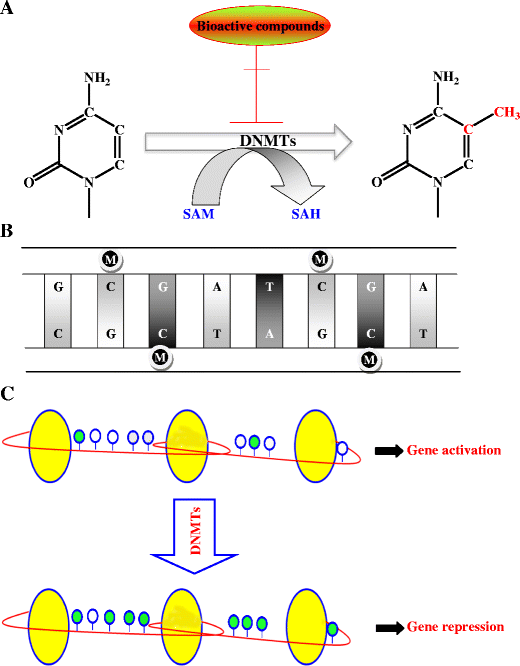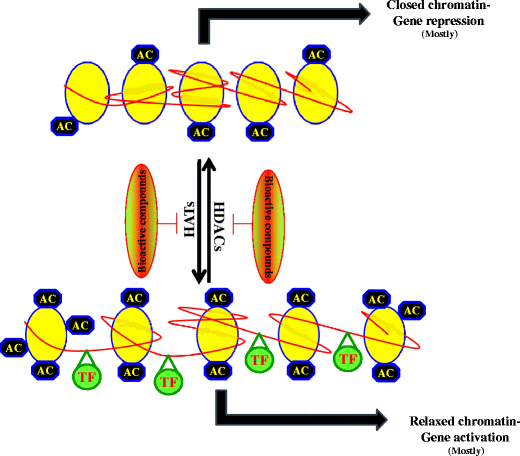Epigenetic targets of bioactive dietary components for cancer prevention and therapy
- PMID: 21258631
- PMCID: PMC3024548
- DOI: 10.1007/s13148-010-0011-5
Epigenetic targets of bioactive dietary components for cancer prevention and therapy
Abstract
The emergent interest in cancer epigenetics stems from the fact that epigenetic modifications are implicated in virtually every step of tumorigenesis. More interestingly, epigenetic changes are reversible heritable changes that are not due to the alteration in DNA sequence but have potential to alter gene expression. Dietary agents consist of many bioactive ingredients which actively regulate various molecular targets involved in tumorigenesis. We present evidence that numerous bioactive dietary components can interfere with various epigenetic targets in cancer prevention and therapy. These agents include curcumin (turmeric), genistein (soybean), tea polyphenols (green tea), resveratrol (grapes), and sulforaphane (cruciferous vegetables). These bioactive components alter the DNA methylation and histone modifications required for gene activation or silencing in cancer prevention and therapy. Bioactive components mediate epigenetic modifications associated with the induction of tumor suppressor genes such as p21(WAF1/CIP1) and inhibition of tumor promoting genes such as the human telomerase reverse transcriptase during tumorigenesis processes. Here, we present considerable evidence that bioactive components and their epigenetic targets are associated with cancer prevention and therapy which should facilitate novel drug discovery and development. In addition, remarkable advances in our understanding of basic epigenetic mechanisms as well as the rapid progress that is being made in developing powerful new technologies, such as those for sensitive and quantitative detection of epigenetic and epigenomic changes in cancer biology, hold great promise for novel epigenetic approaches to cancer prevention and therapy.
Figures


References
-
- Aggarwal B, Kumar A, Bharti A. Anticancer potential of curcumin: preclinical and clinical studies. Anticancer Res. 2003;23:363–398. - PubMed
Grants and funding
LinkOut - more resources
Full Text Sources
Other Literature Sources
